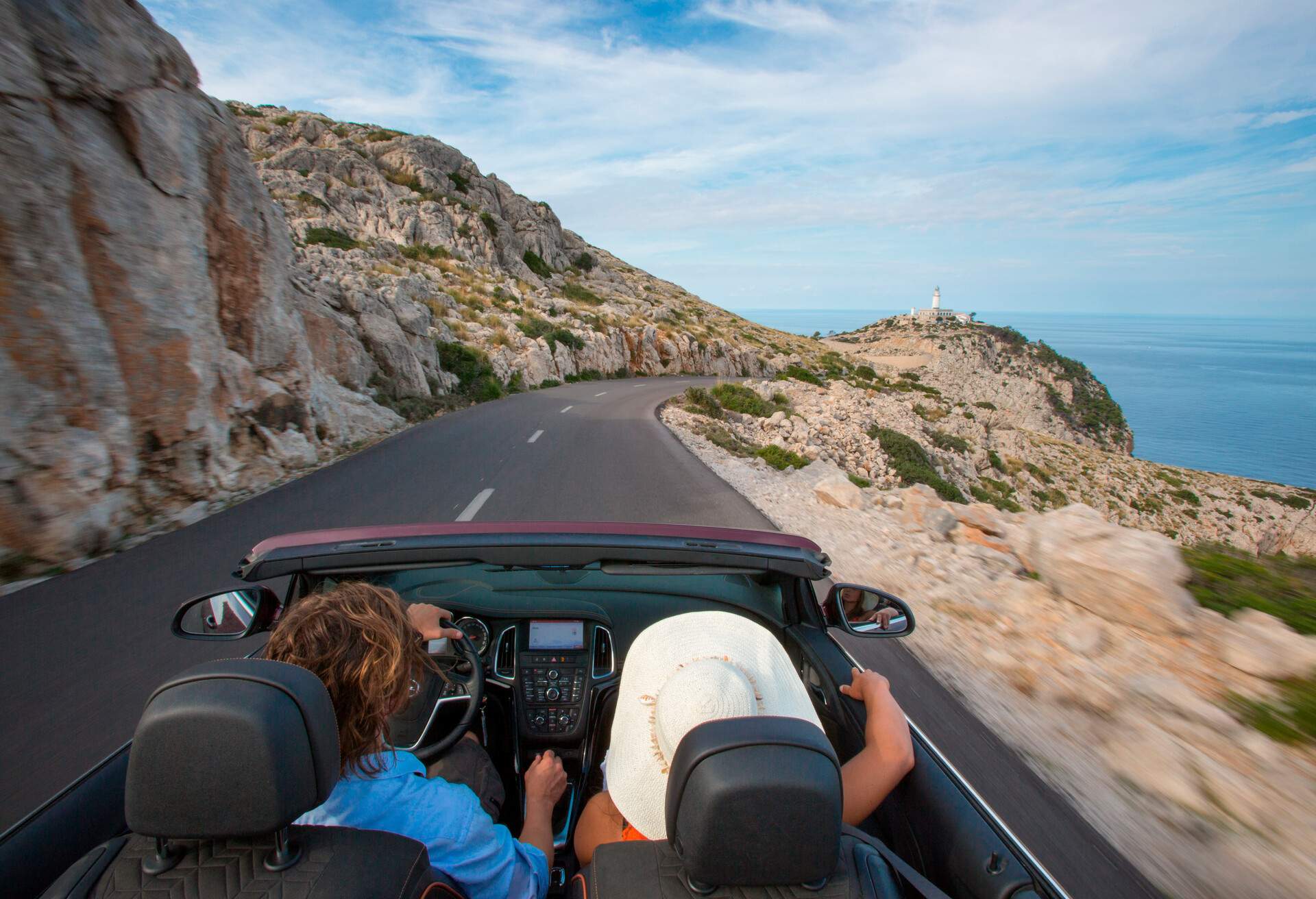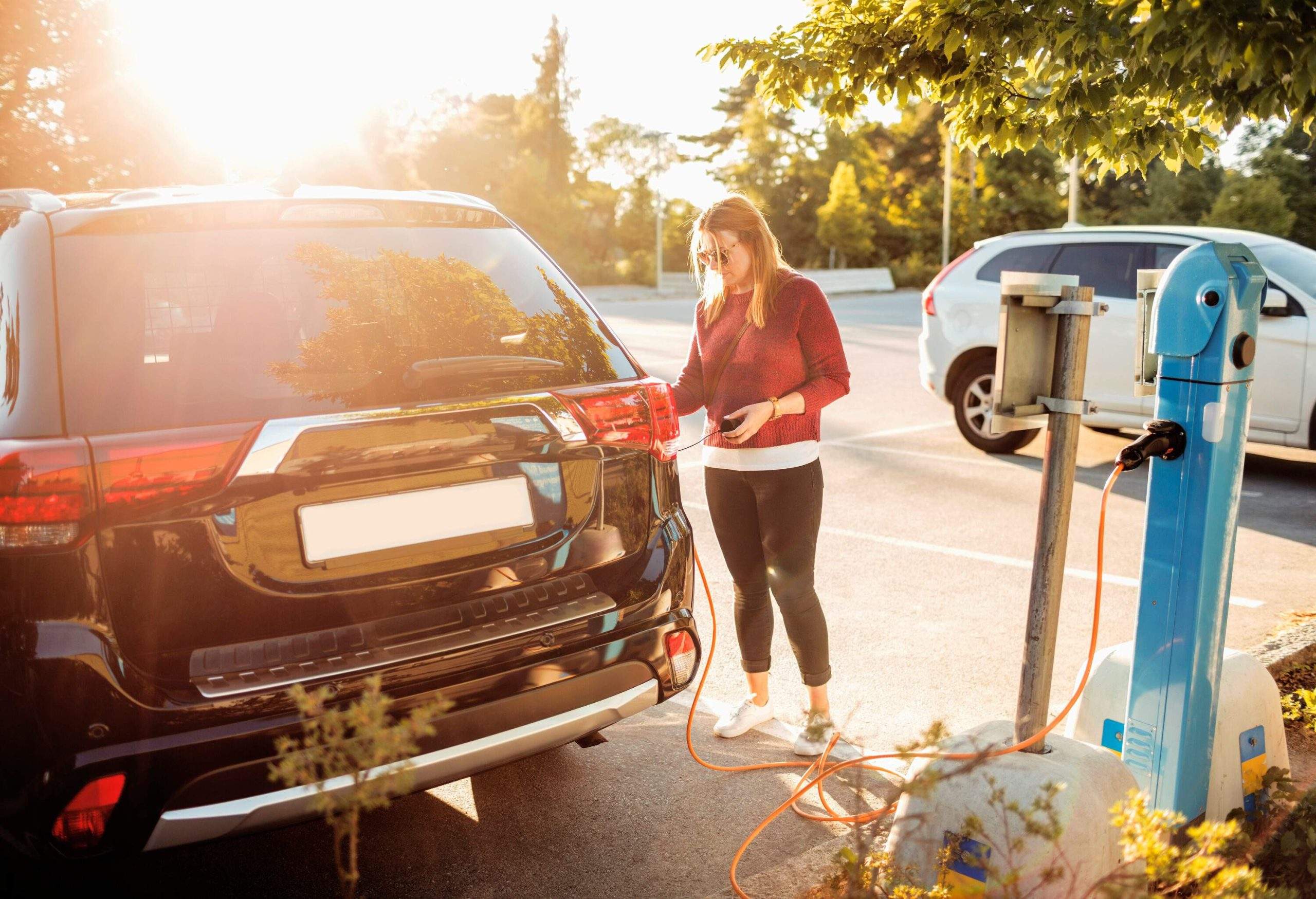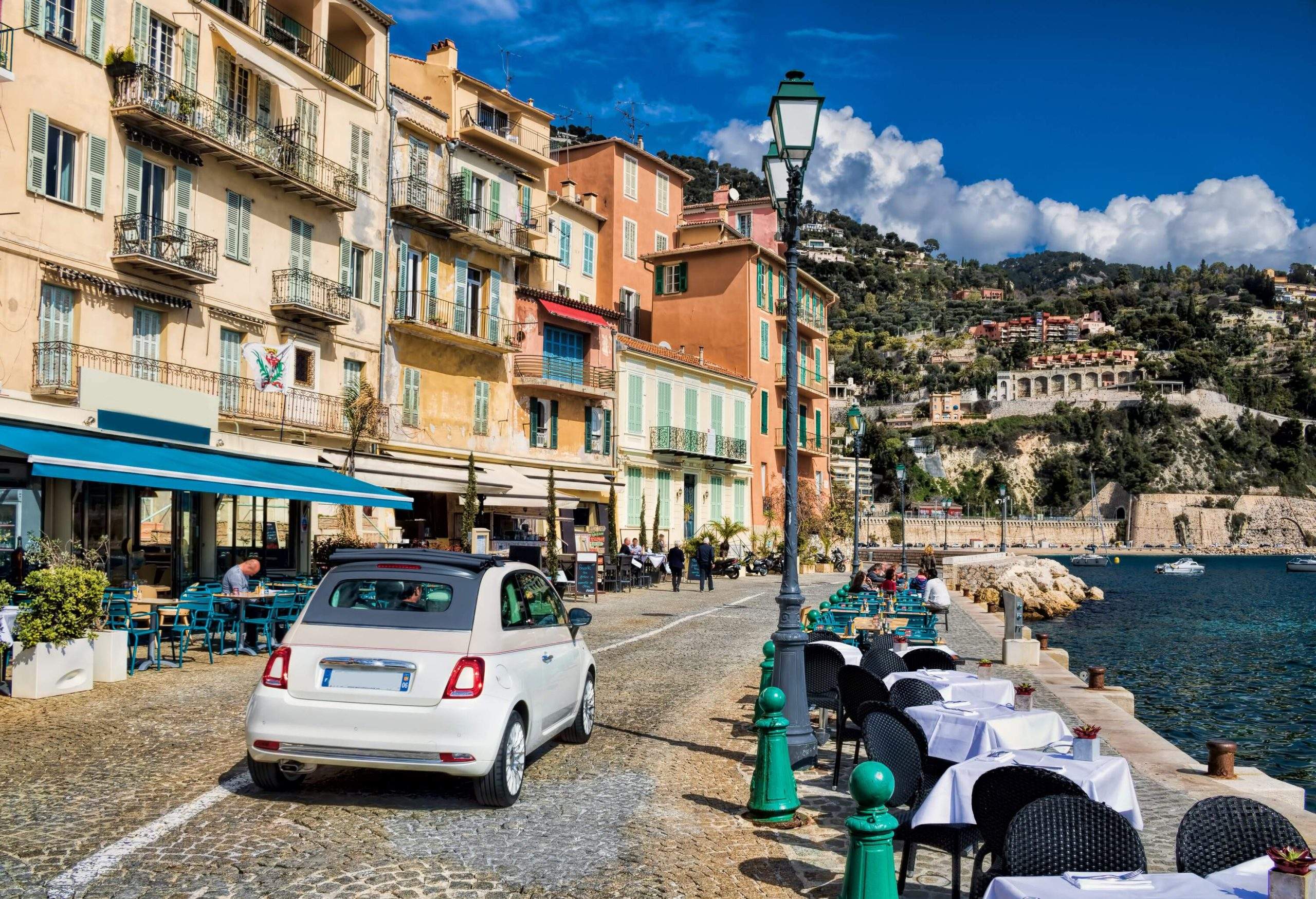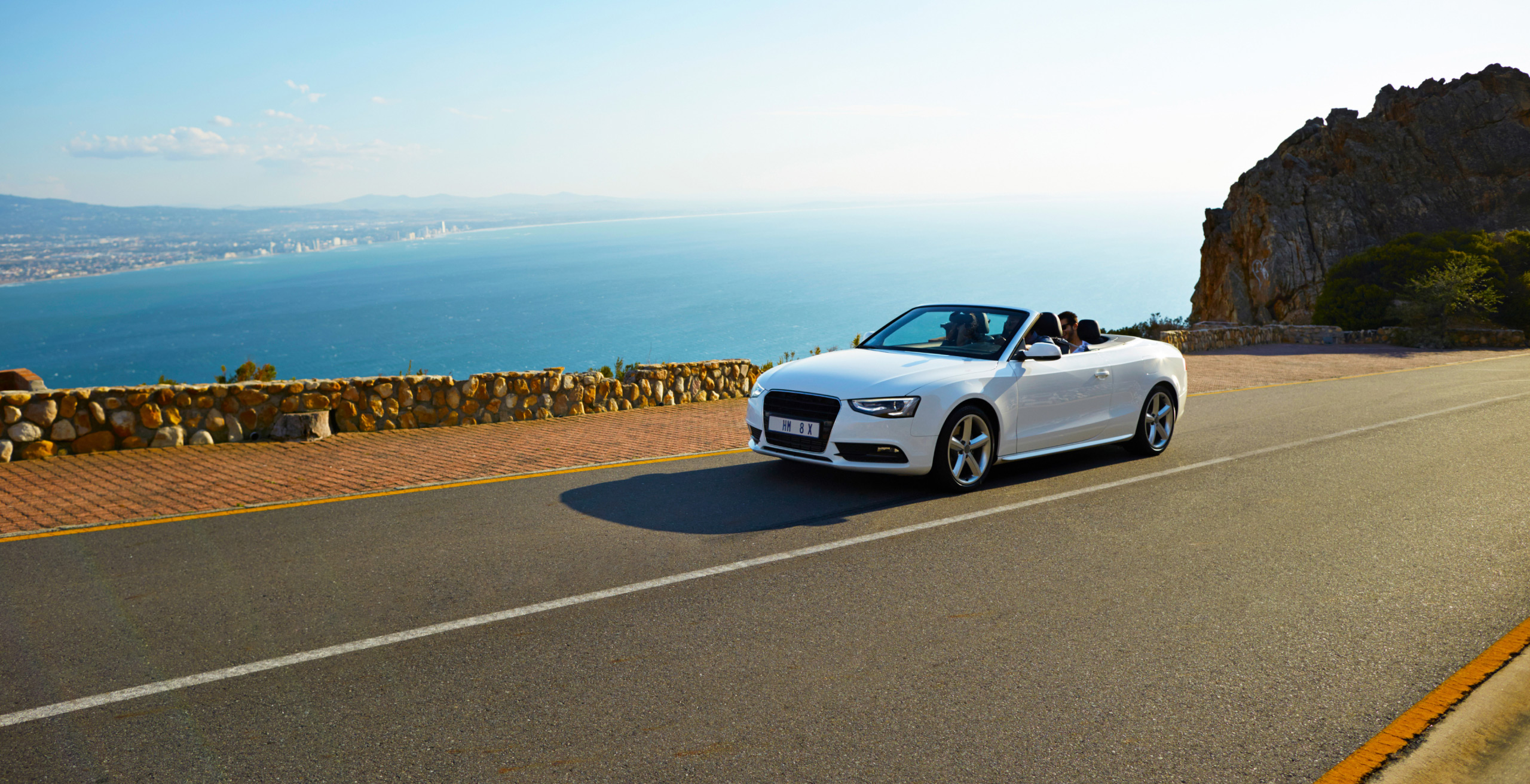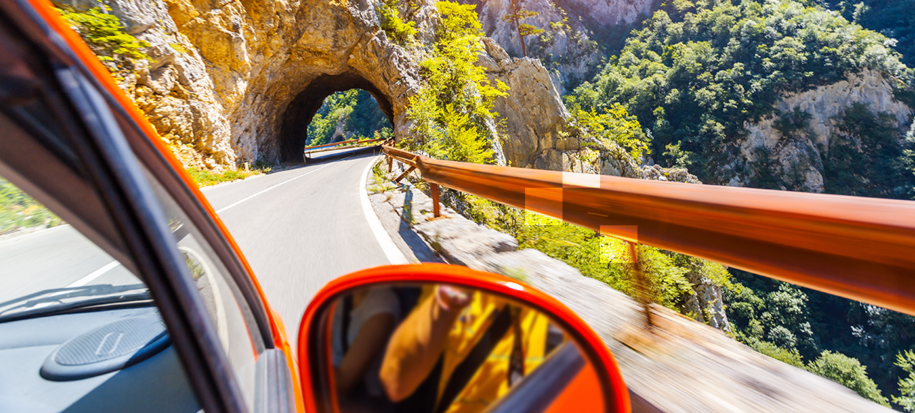Behind the wheel of a car, vacation dreams can come true. Driving in Europe, or anywhere else, gives you the freedom to discover a destination at your own pace, with excitement heightened by motorways turning to coastal highways and backroads that are an outright thrill all in themselves.
But this joy can be tempered by questions and anxieties about doing so. What do you need to know when driving in Europe? And do you need an International Driving Permit? There’s plenty to consider. For everything you need to know, KAYAK is here to help.
The rules and regulations when driving abroad
If only it was as simple as getting in your car, buckling up and going. But it’s not, so before you make plans to drive in Europe, it pays to be aware of many of the different traffic rules and myriad driving regulations.
Understanding International Driving Permits (IDP)
If you want to travel anxiety-free when driving in Europe, then the message is simple: get an International Driving Permit (IDP). This passport type document is an officially recognized, multi-language translation of your own US license — and getting one is as simple as filling out an application form and mailing it or taking it in person to your nearest AAA Travel Office.
Having an IDP is a legal requirement for several Europe countries, including Hungary, Greece, Italy and Poland. And if you don’t have one, you’ll risk a fine.
The documents you need to drive abroad
You’ll need three items to drive in Europe:
- First, your original US driving license.
- Your passport (especially if you’re renting a car)
- And last but not least, an International Driving Permit, wherever it is necessary.

Essential road rules and regulations in popular destinations
The most common breach of the rules relates to speed limits. These vary wildly across Europe and, while you can motor like a F1 Grand Prix racer on Germany’s limitless autobahn network, the speed limit can fluctuate randomly from 20-50mph when driving through villages and towns. The fines are high and there is a risk of losing your license for serious offenses. As a rule of thumb, drive slower than you might at home and act with caution.
Traffic lights often catch US travelers out. Remember in Europe, it’s not acceptable to turn right on a red light after a stop. Roundabouts are also very common – but how you use them will depend on which country you’re in. You’ll use a roundabout anti-clockwise for European countries where you drive on the right. In the UK, it’s clockwise.
Tips for driving safely in Europe
From my personal experience, here are 3 tips to drive in Europe safely.
Pay attention to the wildlife on the road
Be responsible about your alcohol consumption
Beware of the strict rules regarding alcohol and driving. Rates vary from country to country, but in some places a driver can be guilty of drink driving with a blood alcohol level as low as 0.01 per mil. This includes many Eastern European countries like Hungary, Romania and Czechia.
You’ll need special equipment to drive abroad during winter
If you’re traveling in Europe in winter — specifically in the Alps or Scandinavia — consider renting a car that comes with winter tires and snow chains. Indeed, these are mandatory in many countries. If you’re planning on going somewhere remote or known for unpredictable weather conditions, it may be worth opting for a 4WD.
How to rent a car in Europe: a checklist
It might sound like a worrisome list — or the sort of boring lesson to study to pass a test — but this really is straightforward. There are essentials to consider when renting a car in Europe, so before you book take note of all these vital points.
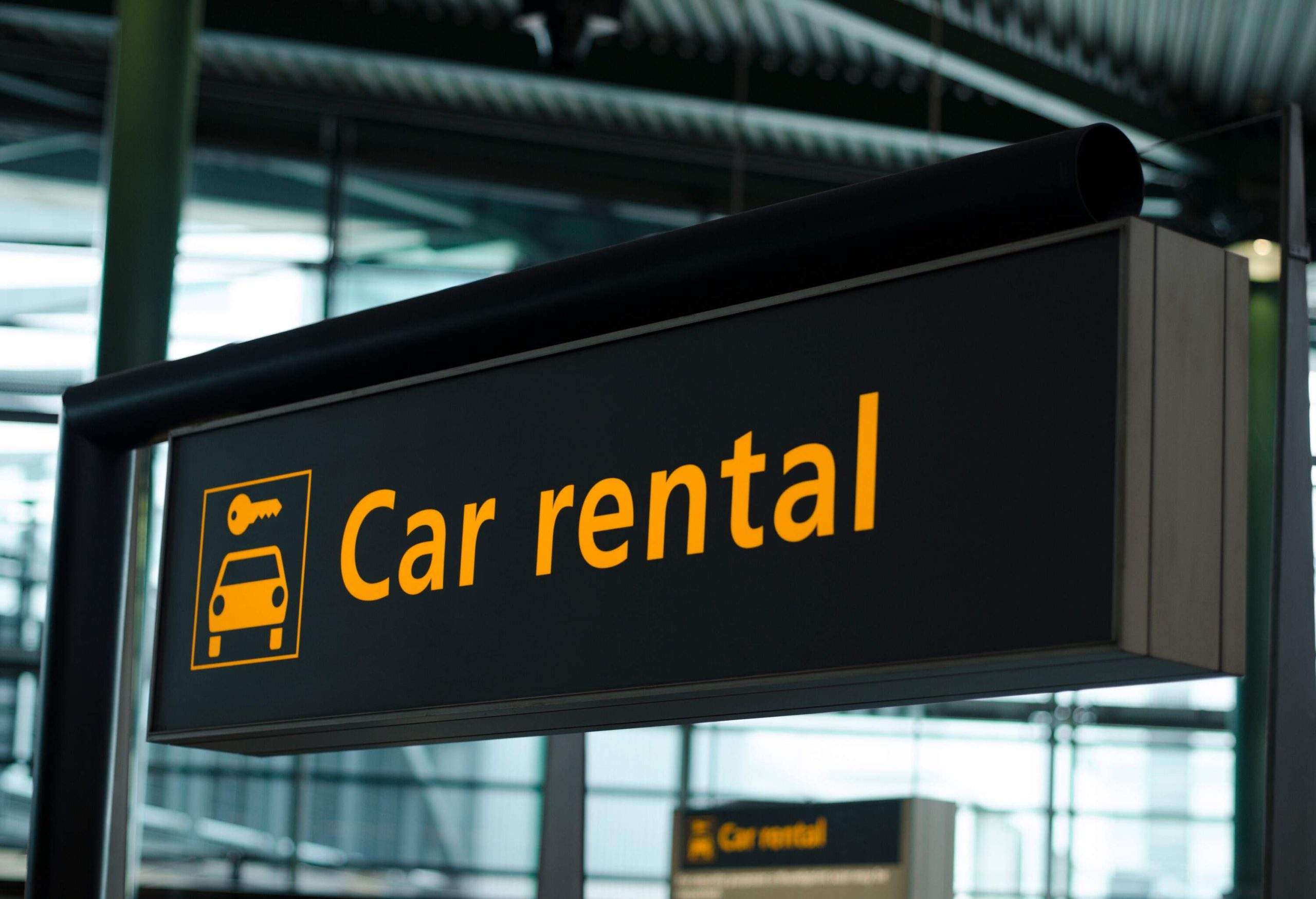
Age restrictions to hire a car
While the minimum age for car rental in the US is from 21, Europe and farther afield is a different matter. Generally, restrictions vary between 21-25, with companies in certain countries frequently charging a so-called ‘Young Driver Fee’ if you are under 25, plus also restricting the types of vehicles on offer. Sweden and Norway have the lowest rental ages, from 18 and 19 respectively. Bear in mind some countries have an upper age limit in place — meaning you might not be able to rent above the age of 65 or above.
Payment methods
A credit card or debit card is normally required to confirm a booking. Always check the website of the rental company directly for any hidden fees and charges and — crucially — make sure you are aware of any potential excess that some rental firms will automatically hold on your credit card as a pre-authorization before picking up your vehicle. This can easily be around $1000-2000.
Insurance coverage
The one time you don’t have coverage, will be the one time you’ll need it, so make sure you insure your vehicle. For minimum stress, take comprehensive insurance or third-party insurance, covering accidental damage to other vehicles if you are at fault. Some rental companies will add a second named driver onto your policy for free.
It’s worth pointing out car rental firms make serious money selling marked-up insurance, so shop around before committing. While you do need cover no matter where in the world you are, a third-party insurance company will likely offer a better deal. One with a higher excess liability will always work out the cheapest option.
Crossing the borders
Check your car rental policy to make sure it’s even allowed before you make your plans. This also applies to one-way car rentals, which are increasingly common. Crucially, inform the rental company about your plans when booking.
For specific rules in popular countries in Europe and North America, discover more if you plan to drive in any of the following countries:
Hidden costs related to the car hire
Beware of hidden costs that might be sprung on you and read the car rental contract well before you sign it. Look out for limited mileage which, if exceeded, will cost you a fee per extra mile traveled. Make sure you also check if you will be charged a cleaning fee, or if the company charges an additional fee for late pickups and returns. Once that’s all done, it almost seems like an afterthought to consider the type of vehicle you’d like to drive.
The cost of driving abroad
If you’re planning on driving long distances, make sure you take into consideration the cost of being on the road. In addition to fuel, you might have to pay toll fees. These could add up, but prior research will give you an idea of which costs to expect and whether or not you can amend your route to avoid them. One further thing to consider: do you need the car for the short or long term? It may seem obvious, but better deals exist for those who rent for longer.

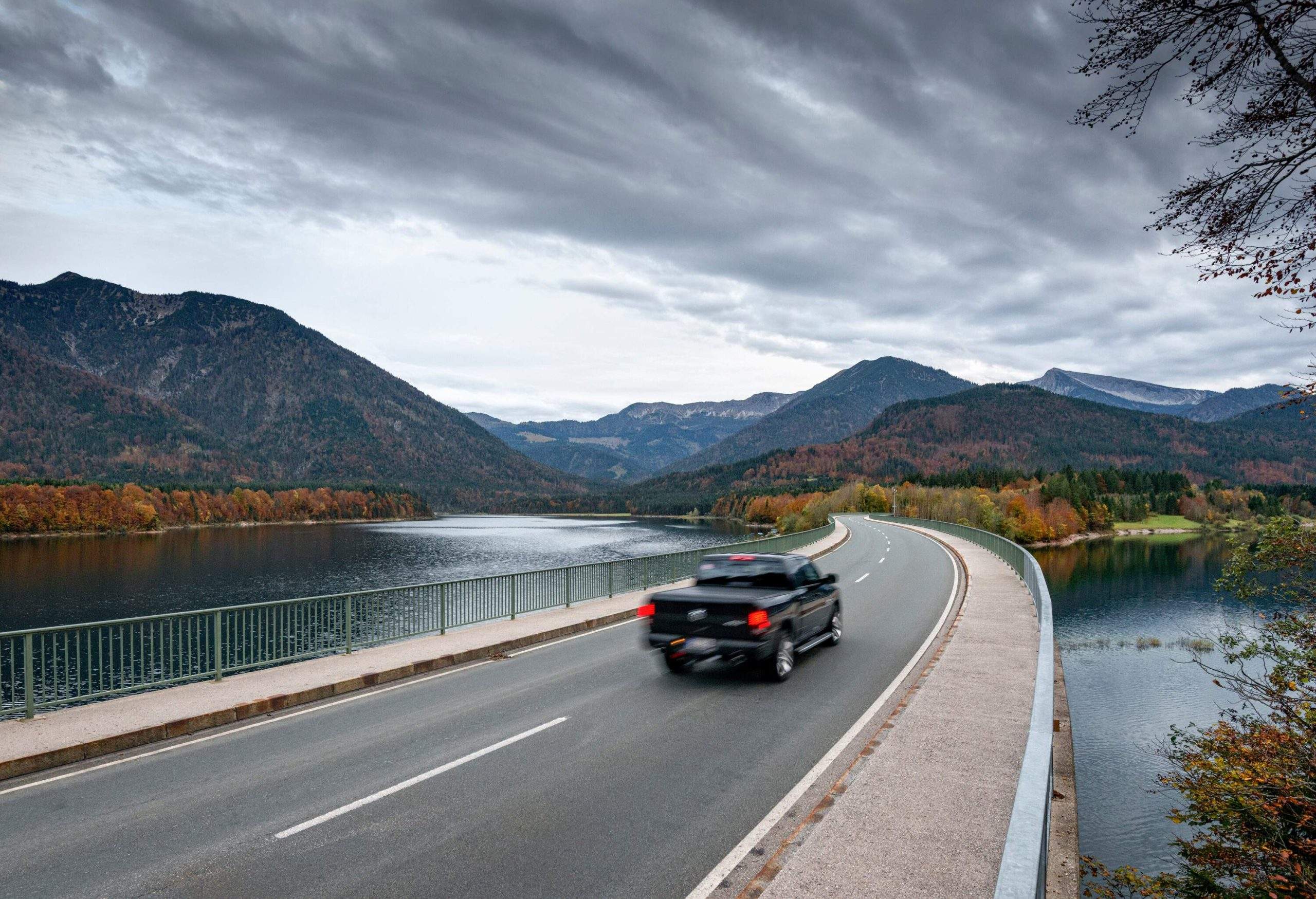
Road trip essentials: packing tips and must-have items
Take a reusable water bottle with you and fill it before you leave the airport or ferry terminal. Some car rental firms require separate, even lengthy bus transfers to get to — and can be nowhere near your arrival airport terminal or port. Long, hot waits in the sun on a stretch of car rental tarmac can be draining.
Go electric. There’s no excuse for not traveling sustainably nowadays and, with more EV (electric vehicle) options than ever, going gas-free and green is the climate-friendly option. My favorite destination is Switzerland’s E-Grand Tour, one of the world’s first road trips for electric cars, and a 1,000-mile route that absorbs a dense network of superchargers and dozens of Unesco sights.
Motorhomes and RVs are another joy, allowing your accommodation to come along with you. There’s a lot to be said for camping in Europe, be it with a motorhome, as long as you follow local guidelines about wildlife and safety. Many RV rentals come with both an en suite shower and toilet, as well as a fully loaded kitchen for spiffy meals in more remote campgrounds. The flexibility a mobile home provides is a big incentive.

Tips for a smooth road trip abroad
Many car rental firms ratchet up the price for an add-on Satnav, making planning and navigating while on the road an expensive business. If you have an international roaming add-on with your mobile phone provider like I do, then the fuss-free, cost-effective alternative is to plug in your own phone (or connect to the in-car system using Bluetooth). That way, you won’t get lost in a foreign land and will be able to concentrate on the actual driving. As an added bonus, your favorite playlists will be at your fingertips.
It’s often forgotten in our rush when getting from A to B: there’s always something to see and discover by the roadside. So <strong>take your time and don’t rush.</strong> Some of my most memorable holiday experiences have been the reward for taking a detour off the fastest road. In northern Bali, when driving an open-top jeep rental, I found the most beautiful beach by inadvertently going the wrong way. On a highway on Alaska, the slow road led me to a cluster of moose by the roadside. It’s a cliche, of course, but the journey is often the destination.
Frequent questions about driving in Europe and overseas
In most European countries, you’ll be able to rent a car and drive with your US license. There are a few exceptions, though, so it’s worth applying for an International Driving Permit (IDP) just in case.
Firstly, check you can use your license in the country you are traveling to, then apply for an International Driving Permit (IDP). You do not need an IDP to drive in many popular countries to visit, including many of those in Europe. However, it’s a good idea to get one anyway, especially if you plan on visiting (and driving in) several different European countries.
For the majority of travel insurance policies, no. You will need to get separate car insurance when hiring a rental in Europe.

